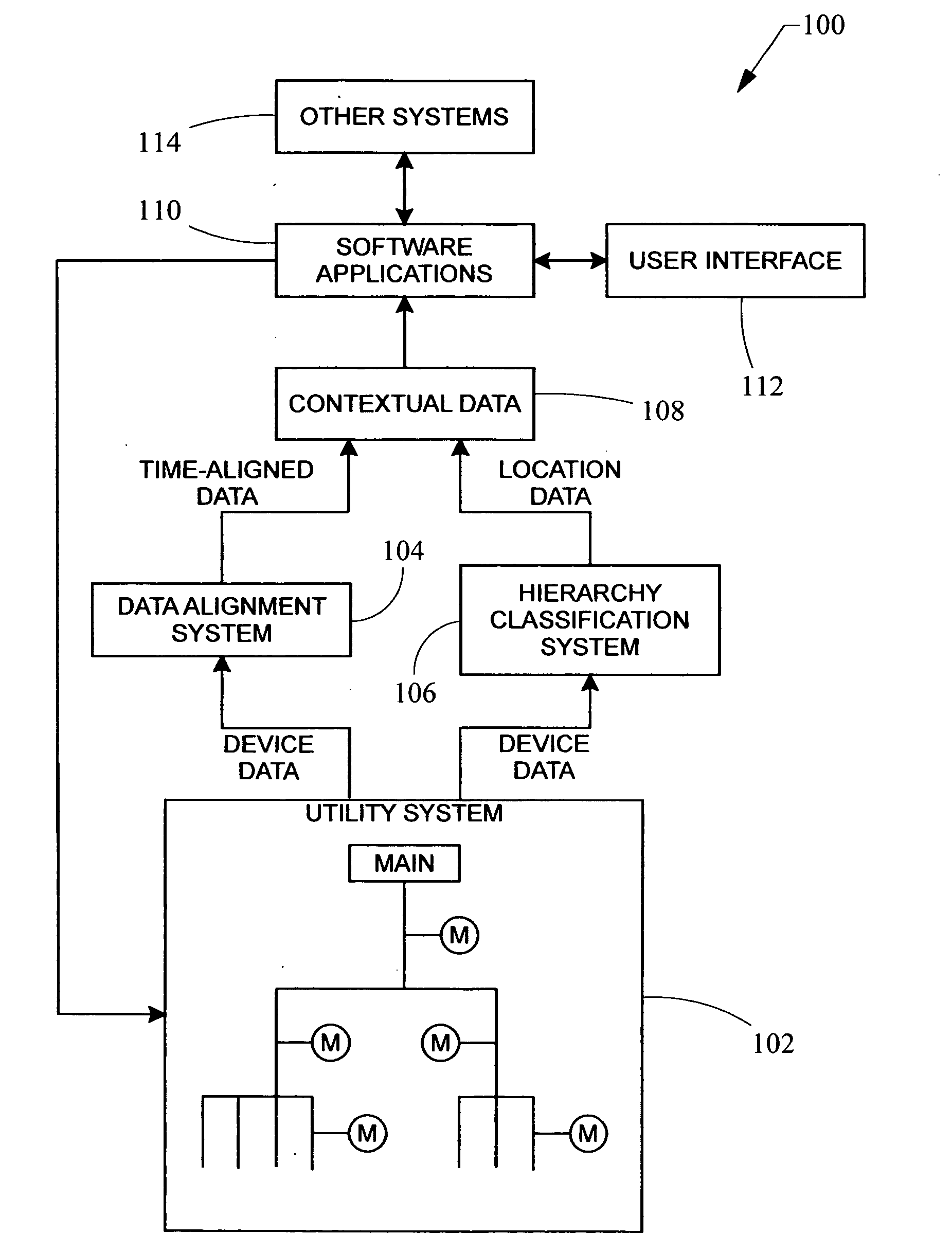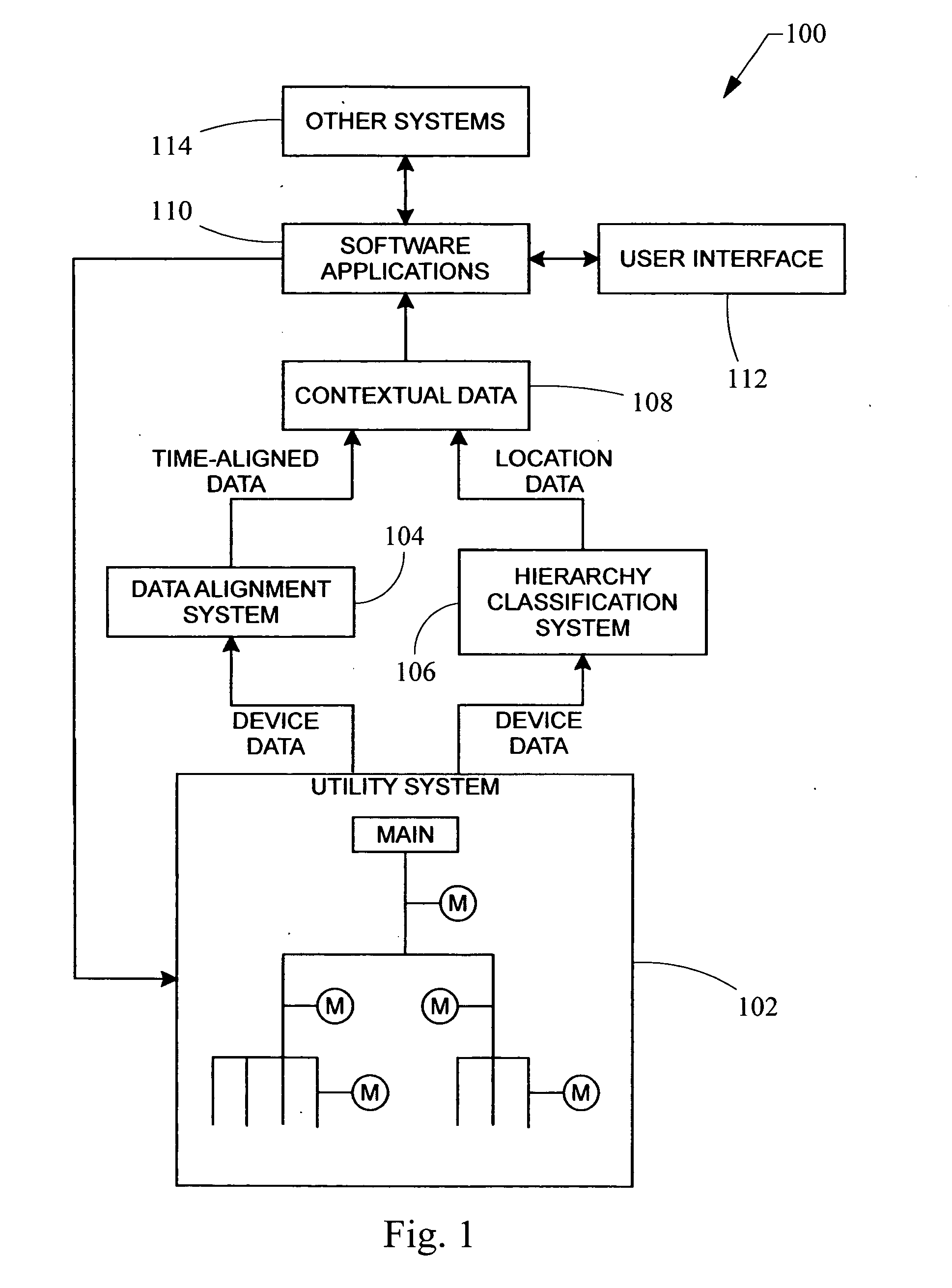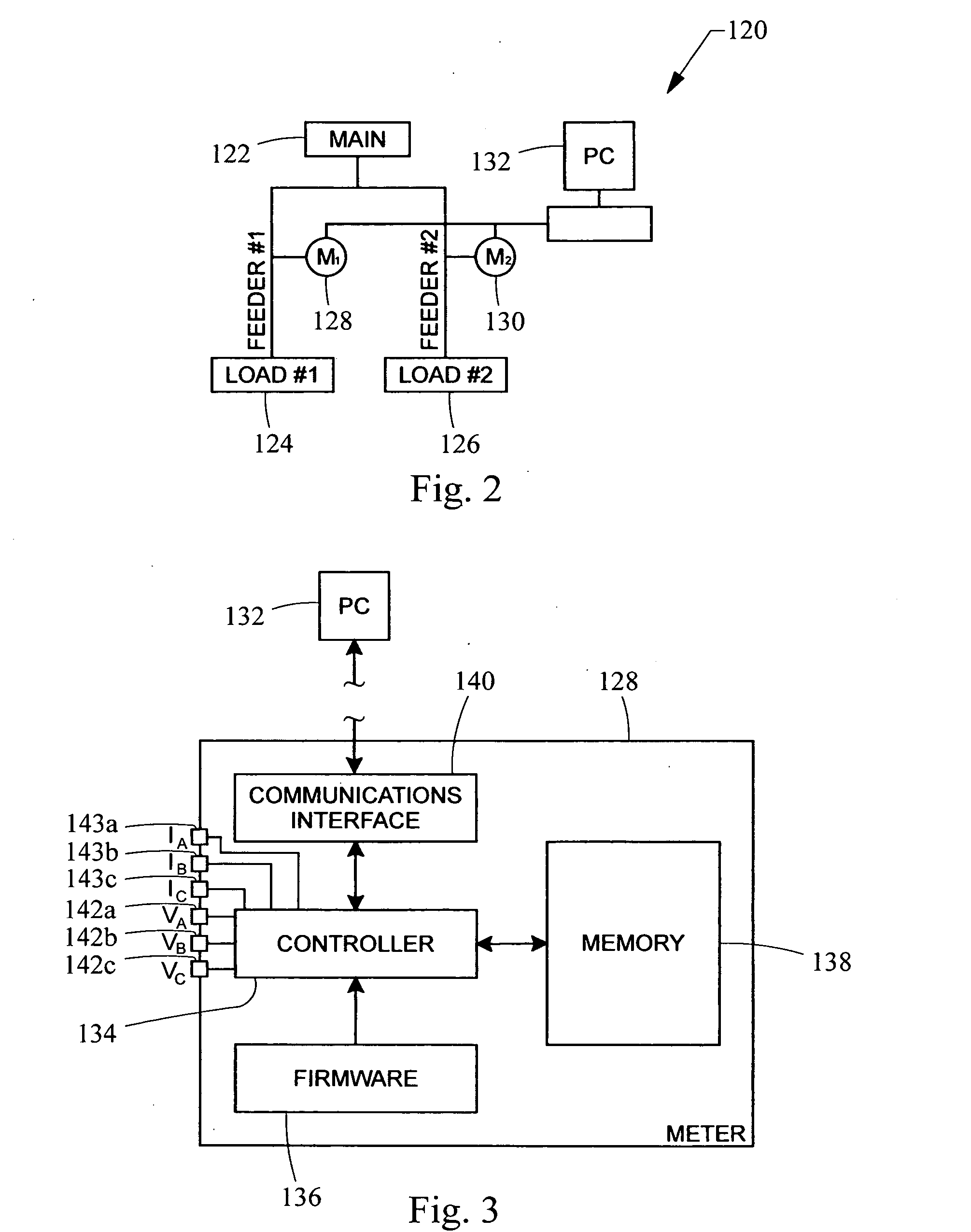Automated hierarchy classification in utility monitoring systems
a technology of utility monitoring and hierarchy, applied in the field of automatic alignment of data, automatic determination of power monitoring system hierarchy, can solve the problems of cumbersome, inefficient, expensive, and inconvenient monitoring of electrical power distribution systems, and the amount of data to be analysed and the context of data
- Summary
- Abstract
- Description
- Claims
- Application Information
AI Technical Summary
Benefits of technology
Problems solved by technology
Method used
Image
Examples
Embodiment Construction
[0035] Turning now to FIG. 1, an automated data integrated monitoring system 100 is generally shown. A utility system 102 having multiple monitoring devices M provides data from each monitoring device M that is communicated to an automated data alignment system 104 and an automated hierarchy classification system 106. The data is aligned automatically in the automated data alignment system 104 in accordance with the present invention and produces data that is aligned such that it represents the data when it was actually seen simultaneously by the monitoring devices M in the power monitoring system 102. The hierarchy classification system 106 automatically learns the hierarchy of monitoring devices present in the utility system 102 and their relationships relative to one another.
[0036] Once the data from each monitoring device M is aligned and each monitoring device's location is known, the data is said to be in context 108. The contextual data 108 can be used by software applicatio...
PUM
 Login to View More
Login to View More Abstract
Description
Claims
Application Information
 Login to View More
Login to View More - R&D
- Intellectual Property
- Life Sciences
- Materials
- Tech Scout
- Unparalleled Data Quality
- Higher Quality Content
- 60% Fewer Hallucinations
Browse by: Latest US Patents, China's latest patents, Technical Efficacy Thesaurus, Application Domain, Technology Topic, Popular Technical Reports.
© 2025 PatSnap. All rights reserved.Legal|Privacy policy|Modern Slavery Act Transparency Statement|Sitemap|About US| Contact US: help@patsnap.com



